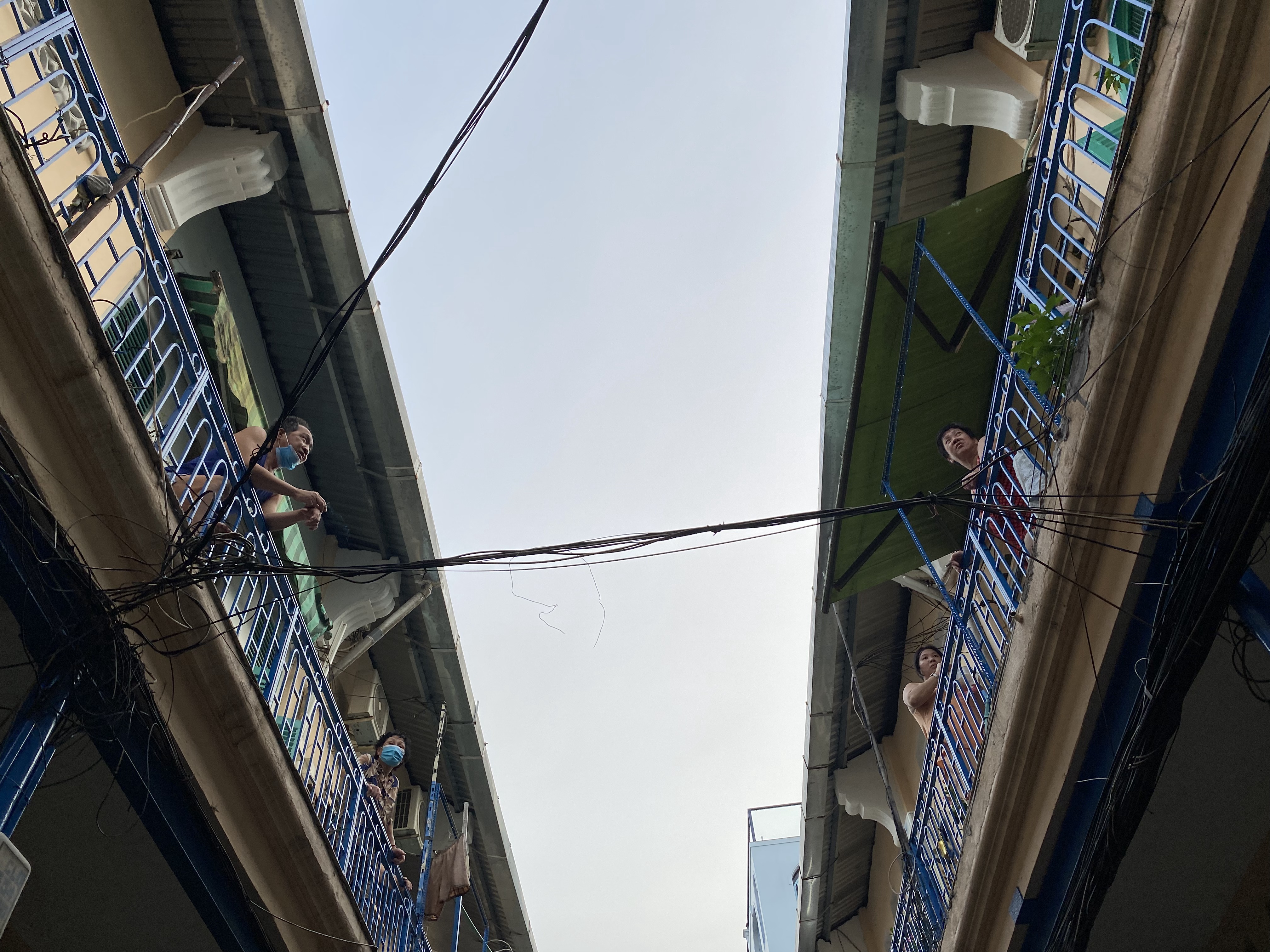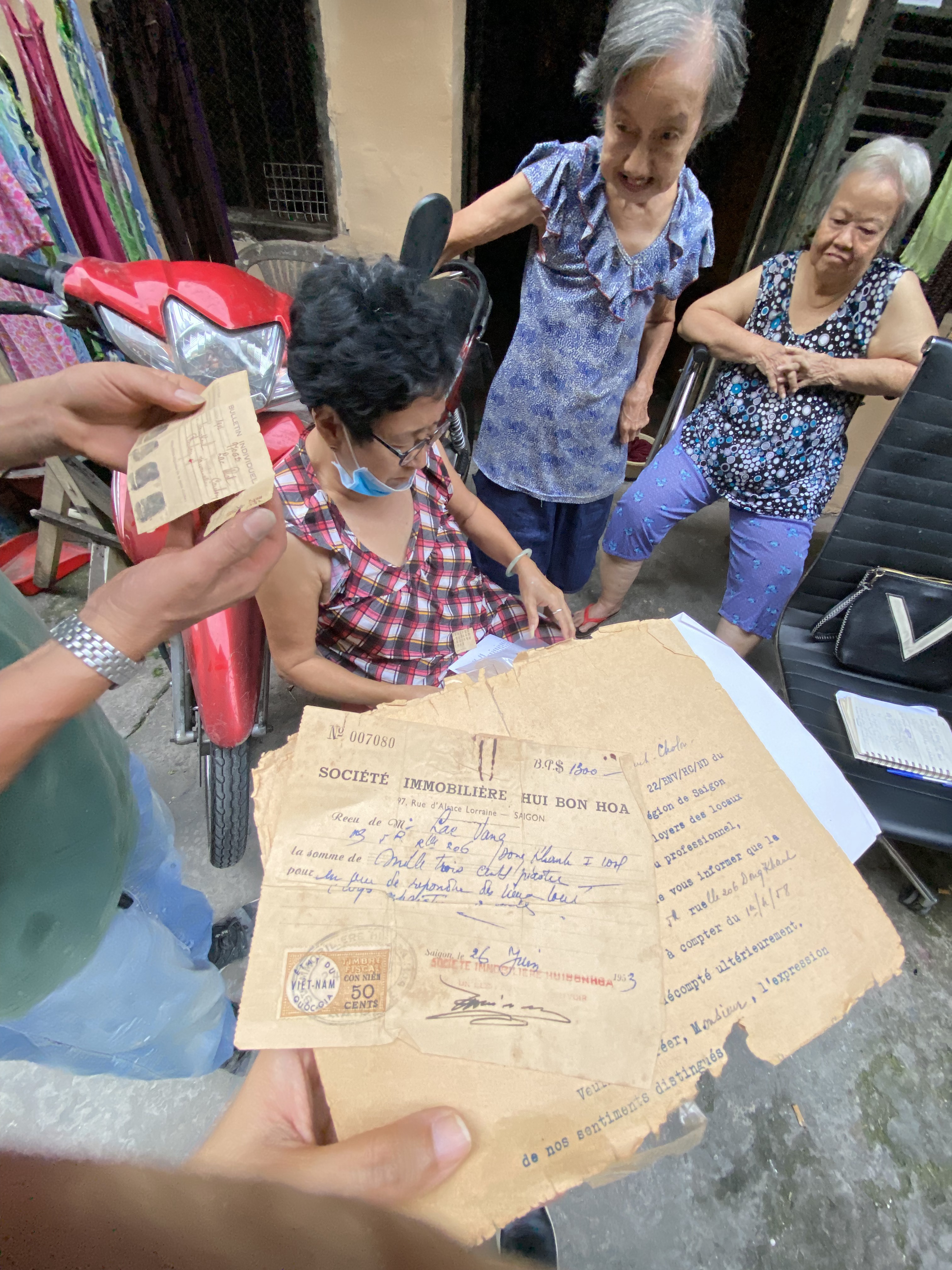Many families who call Cho Lon neighborhood “home” are putting their foot down and refusing to move out of apartments that have been attached to their families for decades, despite the government’s relocation plan meant to send them to modern condo buildings.
Ho Chi Minh City’s Cho Lon neighborhood – the city’s Chinatown – spans several blocks across Districts 5, 6 and 11. Though dozens of the units in the area’s apartment blocks are inhabited by as many seven families, the residents of this historic area enjoy peaceful lives in the same place their families have called home for over a hundred years.
Now, a relocation plan being carried out by the government threatens to change that.
Decades of memories
Khong To Muoi, a 76-year-old retired grandmother who lives with her six children and many of her grandchildren in an apartment block on Tran Hung Dao Street in District 5, is proud that her family’s legacy in the neighborhood dates back 111 years.
Though her unit is just under 30 square meters, over the years, her family has managed to find space to create four separate rooms on the ground floor and two additional rooms on a loft.
According to Tran Binh Phong, a public officer in Muoi’s neighborhood, the apartment Muoi lives in was built in the 1910s by the Hoi Dinh Minh Huong Gia Thanh, an association established by a Chinese community.
The majority of the families in the apartment block are Chinese-Vietnamese.
When the block was first built, the residents of each floor all shared a single restroom. Then, after the government took over the ownership of the apartment blocks, the residents began renovating and building private toilets in their units.
Only one deserted public restroom remains, tucked away in a corner on the first floor near the stairs.
While residents of the block have lived peacefully for decades, a relocation plan announced in 2017 threatens to uproot the lives of the 119 residents who call the block’s 21 flats ‘home.’
With each apartment ranging in size from just 25 to 40 square meters, selling the units off to investors poses a challenge due to limited renovation options.
Ly Thi Mai, a resident of an apartment in the heart of Phung Hung Market, also in District 5, likely shares the same fate at Muoi.
Mai has been living in her apartment for over 70 years. Her husband works as a traditional medicine pharmacist in Cho Lon.
 |
| Residents of the Hao Sy Phuong residential area in Ho Chi Minh City chat on the building’s balcony. This apartment block is over 111 years old. Photo: Le Van / Tuoi Tre |
“We were told in 2017 to move to [a new apartment building in District 5 called] Thuan Kieu Plaza, but all of us residents refused,” Mai said.
“Our apartment block is still in good condition. Generations of us have lived here and want to keep living here with our children, so we declined to go.”
Phan Kim Hien, 49, his mother Phan Ha Lan, 80, his brother and the brother’s family have lived in the same building as Mai since the block was first built.
Hien works as a chef during the day and he and his brother care for their mother in the evenings.
“Twenty years ago, only Chinese people lived in this apartment block,” Hien shared.
“Everyone who lives here is tied to Phung Hung Market, which is called the food market for the rich among Chinese people.
“My mother used to sell coffee and Chinese noodles at the market and my brother and I worked as her helpers.”
Hien’s grandparents came to Vietnam from Guang Dong Province in China. As a child, his evenings were spent with his entire family eating snacks and drinking tea in front of the apartment.
He hopes to pass those same memories onto his own children.
Relocating would take that dream away.
“The neighborhood kids used to have so much fun playing in the common area and on the rooftop. We had such great times with our neighbors during Chinese festivals and the Lunar New Year. We love it here and don’t want to go anywhere else.”
Packing up
Residents of the Hao Sy Phuong area in District 5 are also affected by the relocation plan.
The apartment block was first built by Hui Bon Hoa Group between 1910 and 1920. It boasts 67 units, 86 households, and 245 residents on its two floors.
Over the years, the storied apartment building has become a favorite place for film makers and photographers looking to add a vintage backdrop to their works.
While residents of Hao Sy Phuong once welcomed these visitors with open arms, the litter and damage left behind by film crews has turned them off to outsiders.
‘No filming, no photographs’ is now printed on signs across the block.
Lac Que Huong, a 70-year-old resident of Hao Sy Phuong, has ties to the apartment block stretching back to 1901 when her grandparents first moved in after relocating to Ho Chi Minh City.
Huong happily shows off rental agreements and tax documents dating back to France’s colonial rule over Vietnam to anyone who does not believe her.
Living with Huong are her two other families, one of which Huong shares ownership with.
Huong’s grandfather, Lac Phat, worked for Hui Bon Hoa Group in 1901. The other family that shares ownership over the apartment is Huong’s grandfather’s business partner.
Altogether, the four bedrooms in the 80-square-meter unit are home to four tenants over 70 years old and their five grandchildren.
According to Huong, there were over 30 people living in the flat before 1975.
On the block’s upper level is another flat that is home to two families and a total of 10 residents.
One of those residents is Tran Mui, a 58-year-old who is the youngest among her nine siblings.
Living with her is her 65-year-old brother and his children. Together, they look after their father – 93-year-old Tran Huy.
According to an official in the block’s neighborhood, the entire building was once owned by Hui Bon Hoa, a large real estate group.
“When Mr. Hui Bon Hoa began leasing these apartments, people began making down payments,” he said.
“Chinese people often grouped up to share this expense.
“For example, flat 17 was at first rented by La Nhuan, but she then asked Tran Huy to move in and he has lived there with his children ever since.”
According to Mui, living with so many people rarely causes problems.
“Chinese people tend to be live in harmony, so we hardly ever argue or fight,” she said.
Like us on Facebook or follow us on Twitter to get the latest news about Vietnam!


















































